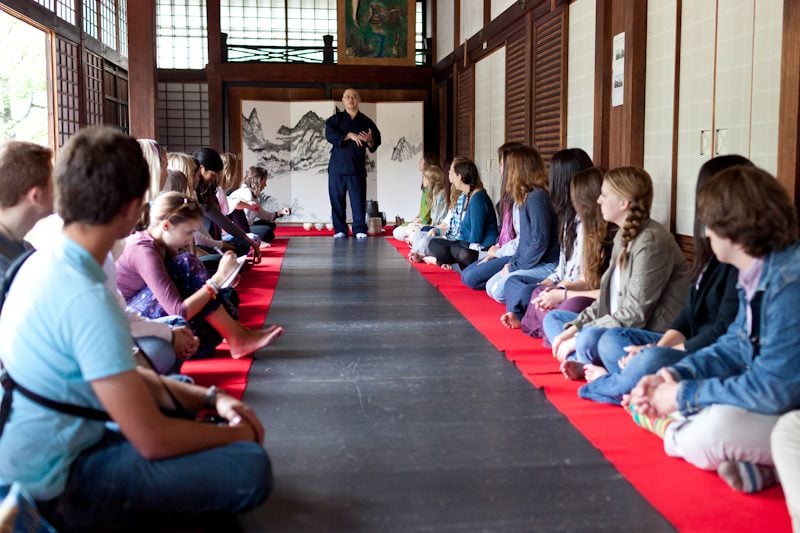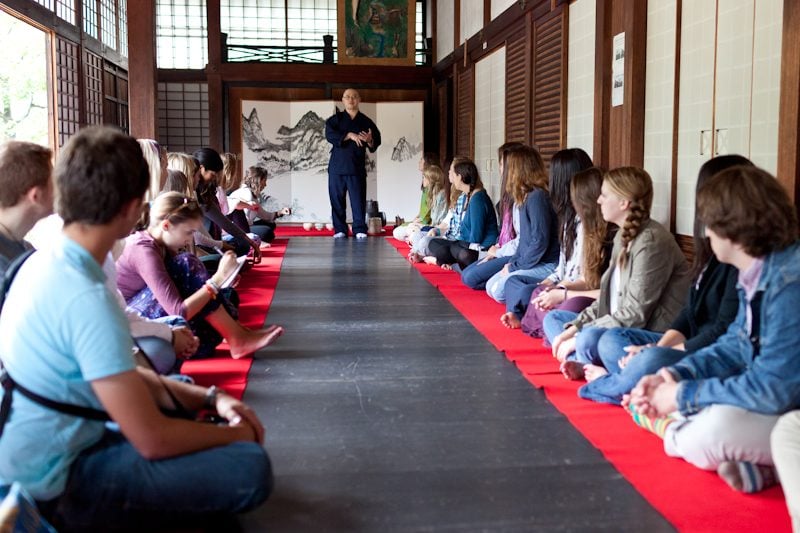
The British break for tea time, Indians commune over chai, but Japan takes the simple process of drinking tea to an art form. While in Japan, students in Anthropology of Food traveled to a quiet tree-shrouded temple in Kyoto, the former imperial capitol, to see how complex tea can be.
Throughout the semester, anthropology students have been learning about the cultural presentation of food, and the Japanese tea ceremony was a perfect example. “The way they do the tea is very meticulous,” explained Jenna Binkhorst, from Boston University. “A women enters and you can see her counting how many steps she takes forward before she turns to the right, then kneels very properly. Everything was very slow and the tiniest things matter. You could tell this was something she’d practiced for a very long time.” In fact, as trip’s translator explained, you can learn the basics of being a tea master in a year, but it takes a decade to truly master the process. “This custom was passed down from her mother, her grandmother,” Binkhorst continued. “It’s definitely an art.”
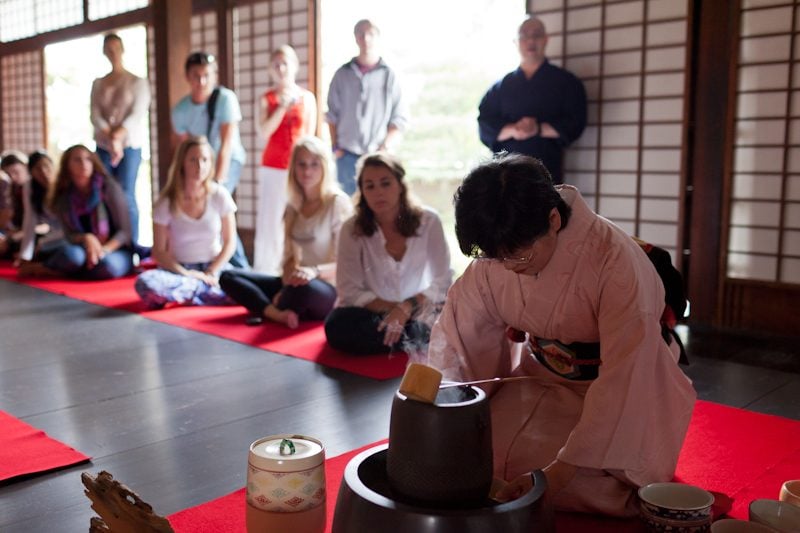
Food, as anthropology students have learned throughout the semester, is far more than simply nutrition. Like every meal, the Japanese tea ceremony exists within a cultural context and, by actively participating in the process, students experienced the principles of their Zen Buddhist hosts firsthand. “One of the things we’d been learning in Anthropology of Food was the purpose of wabi-sabi in the tea ceremony,” Binkhorst continued. “Wabi is beauty and simplicity, the simple things, living a minimalist life. Sabi is finding beauty in imperfection.” Despite the well-practiced steps in the tea ceremony, translators pointed out nearly imperceptible faults such as the slight wobble of a teacup as evidence of wabi-sabi in everything.
While at the temple, students were able to participate in the ceremony, not just observe. Each student received a cup of tea with the design on the teacup facing out, then followed the following complex steps, rotate the teacup twice, 45 degrees apiece, so that the design now faces you. Sip the tea while supporting the cup with your left hand. Again, rotate the cup twice until the design faces outward. Then, and only then, can you set the teacup down.
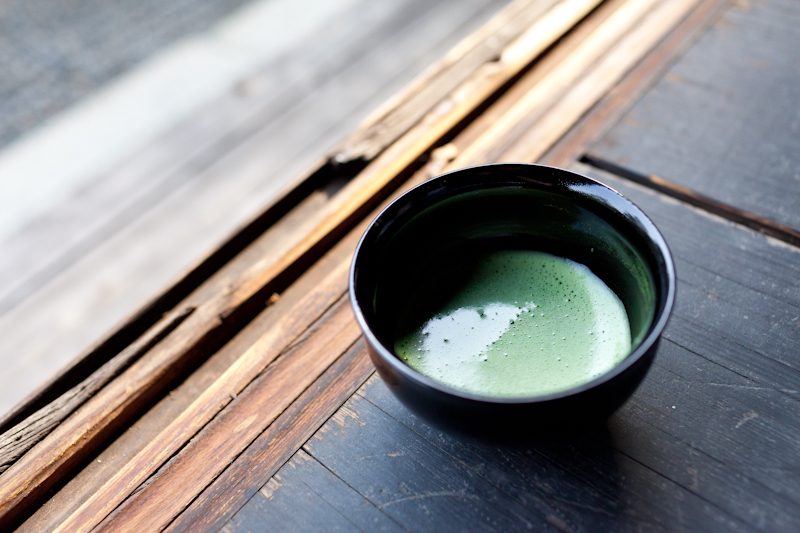
“What I got out of the trip was how the ceremony is a reflection of Zen Buddhism,” Binkhorst concluded. “Wabi-sabi are important features of Zen Buddhism and it’s reflected into the simplicity they live their lives. The most important part of Zen Buddhism is being present in the moment because it will instantaneously become the past. Zen Buddhism focuses a lot on change and how the moment you have right now is now the past.”
Japan is now in the past as well, as the 108th voyage of Semester at Sea heads towards it’s final port in Hawai’i this week.
Click here to read more about this semester’s Anthropology of Food class.
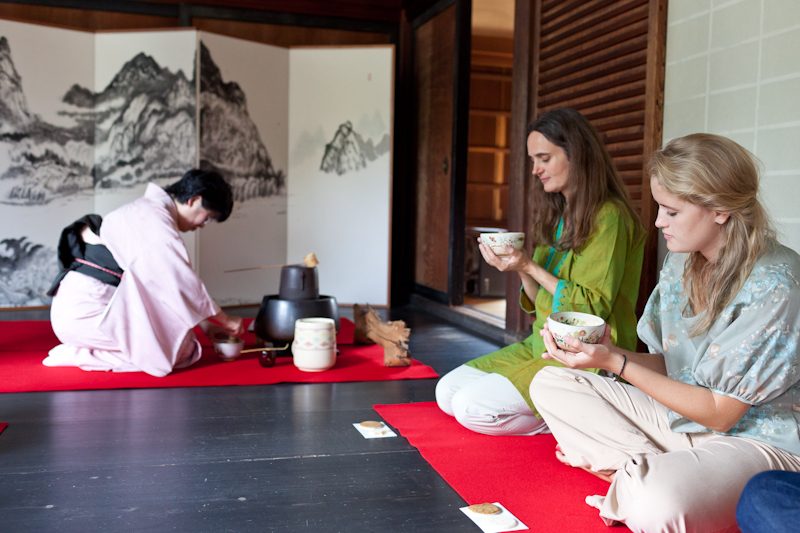
Photos by staff photographer Brian Scannell.
